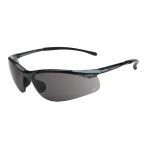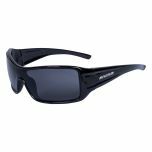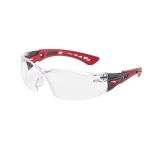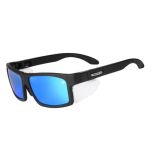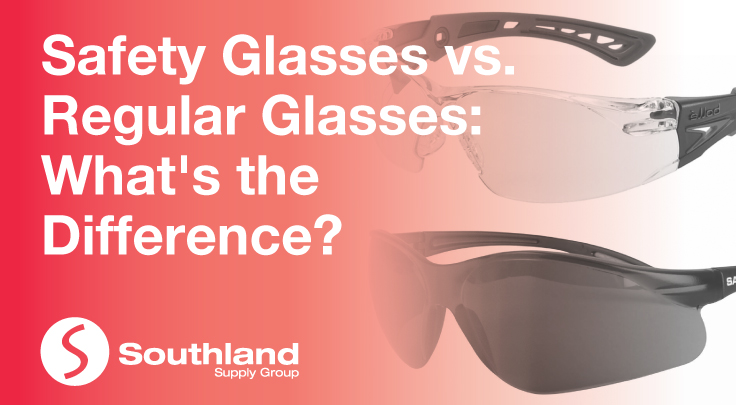
When it comes to eye protection, many people wonder whether regular glasses are sufficient or if they should invest in dedicated safety glasses. While both serve the essential purpose of improving vision, they have distinct differences and are designed for specific tasks and environments. Below are the key differences between safety glasses and regular glasses to help you make an informed choice for your eye protection needs.
1. Impact Resistance
One of the most significant differences between safety glasses and regular glasses is their impact resistance. Safety glasses are particularly designed and tested to withstand high-velocity impacts, such as flying debris, particles, or blunt objects. They are typically made from robust materials like polycarbonate, which is highly impact-resistant like the 1614401 Prism Anti-Scratch Anti-Fog Bolle Safety Glasses that comply with Australian Standard AS/NZS 1337 for medium impact protection. In contrast, regular glasses are not designed with the same level of impact resistance in mind. They are more prone to shattering or breaking upon impact, which can lead to eye injuries in hazardous situations.
2. Lens Material
Safety glasses often feature lenses made from polycarbonate, which is known for its durability and impact resistance. This material provides excellent protection against potential eye hazards. On the other hand, regular glasses commonly have lenses made from materials like glass or plastic, which are not as durable or impact resistant as polycarbonate. This makes them unsuitable for situations where eye protection is crucial.
3. Frame Design
The design of the frame also sets safety glasses apart from regular ones. Safety glasses typically have a wraparound design that provides more coverage for the eyes like the 1615501 Contour Bolle Safety Glasses. It offers a dual lens and half frame design that provides excellent eye coverage. This design not only protects your eyes from front-on impacts but also shields them from side impacts, which can occur in various work or sports environments. Regular glasses, while they may have larger frames, are not designed to offer the same level of side protection, making them less suitable for hazardous conditions.
4. Safety Standards
Safety glasses are subject to strict safety standards established by organizations like ANSI (American National Standards Institute) and EN (European Norms). These standards ensure that safety glasses meet specific criteria for impact resistance, optical clarity, and UV protection. Regular glasses, while they may meet standards for vision correction, do not necessarily adhere to the same safety standards. Using regular glasses in situations that demand safety glasses may not provide the level of protection required by safety regulations.
5. UV Protection
Safety glasses come with built-in UV protection to shield your eyes from harmful ultraviolet rays. This feature is particularly important for outdoor work or recreational activities. Regular glasses may or may not have UV protection, depending on the type of lenses used. If you spend time outdoors, especially in sunny conditions, safety glasses can offer an added layer of protection against UV radiation.
6. Durability
Safety glasses are built to withstand the rigours of various environments, making them more durable than regular eyeglasses. They are less likely to scratch, break, or warp, ensuring a longer lifespan. Regular glasses, while durable for everyday use, may not hold up as well in challenging conditions, such as those encountered in construction, manufacturing, or sports.
7. Specialised Features
Safety glasses often come with specialised features to meet specific needs. For example, anti-fog safety glasses feature coatings that can prevent the lenses from fogging up in humid or cold conditions, while tinted safety glasses provide glare protection and shade from bright sunlight. These features are not typically found in regular glasses.
In summary, safety glasses and regular glasses serve distinct purposes and are designed to meet different needs. Safety glasses prioritise protection against high-velocity impact, UV radiation, and other potential hazards. Regular glasses, on the other hand, are primarily intended for vision correction and may not offer the same level of protection. When deciding between the two, consider the nature of your work or activities. If you find yourself in environments where eye protection is essential, such as construction sites, laboratories, or sports that involve flying objects, investing in safety glasses is a wise choice. However, if you need vision correction, explore options for prescription safety glasses to ensure you can see clearly while staying safe.
At Southland Supply Group, we are happy to offer you a wide selection of safety glasses. To view our collections, you can visit https://www.southland.com.au/personal-protective-equipment/eye-protection and start browsing. You can also use extensive filtering options to find the best pair for you. If you have any questions about these differences, don’t hesitate to contact us.

